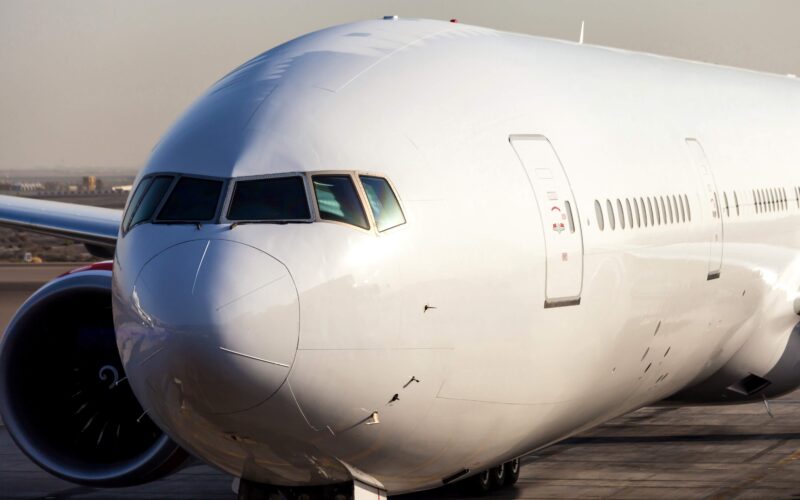Two Boeing 777-200s belonging to Air Zimbabwe are being considered for short-term leasing to interested parties, with an option to later become freighter conversions.
The two aircraft, registered Z-NBE (MSN 28422) and Z-RGM (MSN 28421), entered storage in October 2020 and are currently parked at Harare International Airport in Harare, Zimbabwe.
Despite difficulties hindering the operation of the aircraft, Air Zimbabwe’s acting CEO Tafadzwa Zaza told state newspaper Sunday News that he was keen to reactivate the aircraft for both short and long-term activities.
“We are not in a position to operate them before we consolidate nationally or regionally,” Zaza said, as he commented on the airline’s operations and plans for the 777s.
“So, as a short-term plan, we want to lease these aircraft as wet-lease or dry-lease and have invited investors interested in them. The long-term plan is to convert one or all of them into freighters,” he said.
Prior to the news that it would be leasing its 777 fleet, Air Zimbabwe announced its intent to rejoin IATA within three months, as the airline settles outstanding debts estimated to be around $140 million dollars.
“The process is underway to rejoin IATA, which I think in the next three months we should be a member of the IATA Clearing House. It’s very critical to join the IATA Clearing House to be able to contribute to the aviation global distribution system. Right now, it’s difficult to pick us on the system since we are not a member,” Zaza added.
Once a member, the airline is keen to expand its network and fleet, and resume its international services, setting its sights on serving at least one route to Germany or Dubai.
The infamous history behind Air Zimbabwe’s 777-200s
Air Zimbabwe’s two Boeing 777s have an average age of 17 years and were acquired from Malaysia Airlines with former registration 9M-MRQ and 9M-MRP, according to ch-aviation.
The aircraft have a two-class configuration, with 247 seats in economy and 35 in business class.
However, there are several unaccounted financial discrepancies in the aircraft’s acquisition history.
While the airline, which was then operating under the name Zimbabwe Airways, had originally intended to acquire four Boeing 777-200s, it secured just two aircraft in 2016. During this period, Zimbabwe Airways had accumulated a debt of more than $300 million dollars. The aircraft purchase was negotiated during the political era of former Zimbabwean president Robert Mugabe.
#UPDATE Air Zimbabwe has taken delivery of a Boeing 777-200 bought for US$16.5m from Malaysia Airlines in 2016. The now 15-year-old plane, initially acquired by the ill-fated Zimbabwe Airways, will see the flag carrier revive its London and Beijing routes pic.twitter.com/iphKLw6boB
— ZimLive (@zimlive) January 20, 2020
In a purchase agreement between Malaysia Airlines and the Zimbabwean government for the two Boeing 777-200s, an audit performed in July 2019 found that approximately $51 million dollars was paid in unapproved transactions.
Further, reports revealed that an additional $140 million dollars could not be accounted for.
However, the national carrier hopes to leave behind the notoriety of its legacy issues and reinvent its domestic and regional flag carrier operations. It also aims to form strategic partnerships to benefit its connectivity as an airline as well as its training and maintenance services.
“With Government support, we are going to expand and increase our frequency and we are open to engaging investors,” Zaza told Sunday News.
He added: “We have got the capabilities to do maintenance works on aircraft for regional clients and we have a well-trained team and infrastructure and will be happy to have investors to modernize this.”

